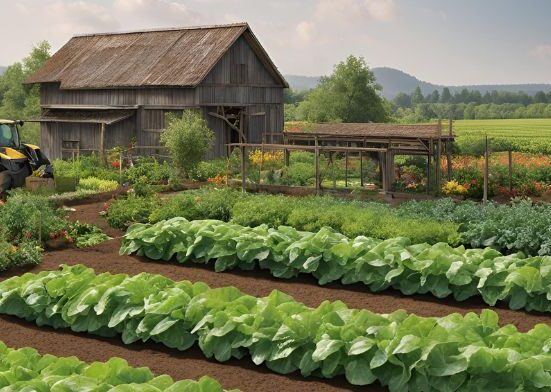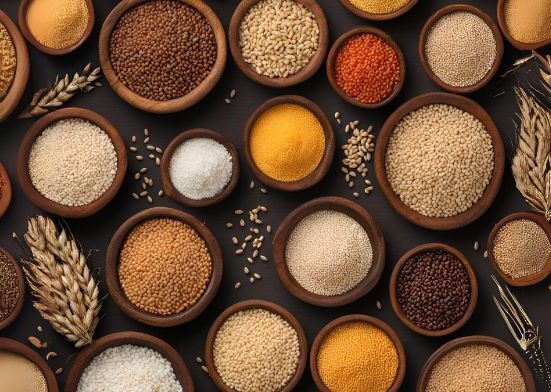There’s something almost magical about biting into a fresh, ripe cherry. Whether it’s the juicy burst of sweetness from a Bing cherry or the tart snap of a Montmorency, cherries are a seasonal delight that captivates fruit lovers across the globe. But if you’ve ever wondered exactly when cherries are in season or why they seem to appear and disappear from market shelves in the blink of an eye, you’re not alone.
In this comprehensive guide, we’ll explore the cherry season from a comparative standpoint, looking at regional variations, cherry varieties, and tips on choosing and storing the freshest cherries. Whether you’re a home baker, a nutrition enthusiast, or just someone who loves a bowl of fresh cherries in the summertime, this guide is your go-to seasonal reference.
Cherry Seasonality
Cherry season is a short but eagerly anticipated window that varies significantly depending on location and climate. Typically, cherries come into season from late spring to mid-summer, with May through July marking peak availability in the Northern Hemisphere. In the United States, for example, California begins harvesting as early as mid-May, followed by Oregon and Washington from June through July. These western states supply the bulk of sweet cherries, such as Bing and Rainier cherry picking varieties.
Tart cherries, like Montmorency, have a shorter, more concentrated season—usually just a few weeks in late June or early July—primarily in states like Michigan and Wisconsin. Meanwhile, in the Southern Hemisphere, countries like Chile offer fresh cherries during North America’s winter months, from November through January, making them a key source during the global off-season. Cherry seasonality is highly sensitive to temperature, rainfall, and altitude, which influence the timing and quality of the harvest. Because of this, cherry lovers often track local markets or farm stands to catch these fleeting fruits at their freshest. Understanding the regional nuances of cherry season not only helps shoppers plan but also enhances appreciation for this seasonal when is cherry season delicacy.
Cherry Seasons in the Northern Hemisphere
Cherries, with their vibrant color and sweet-tart flavor, have a highly anticipated season that varies across the Northern Hemisphere. Understanding when cherries are in season requires looking closely at regional timelines, climatic influences, and geographic factors that What is Rapeseed shape their growth cycles from California cycles.
Season Timeline by Region
- North America: In the United States and Canada, cherry season typically kicks off in late May and extends through July. West Coast regions like California, Oregon, and Washington lead the harvest starting as early as late May, while Midwest and East Coast areas often see peak harvests in June and early July.
- Europe: European cherry season generally spans from late May to mid-July. Countries such as Spain, Italy, France, and Germany harvest cherries beginning in late spring, with southern regions enjoying earlier crops due to warmer climates, and northern areas experiencing later peak months.
- Asia: In Asia, major cherry-producing countries like Turkey, Iran, and parts of Central Asia see their seasons from May through July. Japan’s famous cherry harvest, often linked with the iconic sakura blossom, usually peaks in June for edible cherries.
Influencing Factors: Climate, Altitude, and Microclimates
The timing and duration of cherry seasons are heavily influenced by climate and environmental conditions:
- Climate: Warm spring temperatures accelerate blooming and fruit development, while late frosts can delay or damage cherry crops. Regions with mild winters followed by warm springs often enjoy earlier harvests.
- Altitude: Higher altitudes tend to delay cherry blooming and harvest due to cooler temperatures, often shifting peak season later into the summer months compared to lower elevation areas.
- Microclimates: Localized climate variations, such as sheltered valleys or areas near large bodies of water, can create microclimates that extend or shorten the cherry season by moderating temperatures and frost risks.
Peak Months and Regional Variations
While May through July broadly covers cherry season in the Northern Hemisphere, peak months can vary:
- In California and southern Europe, cherries often reach peak ripeness in June.
- In northern Europe and higher altitudes, the prime cherry season might shift into late June or early July.
- Regions with cooler climates or variable spring weather may experience a shorter or more unpredictable season.
The Two Main Types of Cherries
 Cherries are a beloved fruit enjoyed worldwide, and they primarily come in two main types: sweet cherries and sour cherries. Each type has unique characteristics that influence their taste, appearance, and best uses. Sweet cherries, scientifically known as Prunus avium, are the kind most often eaten fresh. They have a firm texture, glossy skin, and a rich, sweet flavor. Popular varieties include Bing, Rainier, and Lambert cherries. These cherries are perfect for snacking, salads, or as a fresh topping for desserts. Sweet cherries thrive in temperate climates and are usually harvested in late spring to early ca cherry cash crops summer.
Cherries are a beloved fruit enjoyed worldwide, and they primarily come in two main types: sweet cherries and sour cherries. Each type has unique characteristics that influence their taste, appearance, and best uses. Sweet cherries, scientifically known as Prunus avium, are the kind most often eaten fresh. They have a firm texture, glossy skin, and a rich, sweet flavor. Popular varieties include Bing, Rainier, and Lambert cherries. These cherries are perfect for snacking, salads, or as a fresh topping for desserts. Sweet cherries thrive in temperate climates and are usually harvested in late spring to early ca cherry cash crops summer.
On the other hand, sour cherries, or tart cherries (Prunus cerasus), have a brighter red color and a more acidic, tangy taste. They are softer and less sweet than their sweet counterparts. Sour cherries are ideal for cooking and baking, often used in pies, jams, sauces, and beverages. Montmorency is the most well-known sour cherry variety and dominates commercial production for processing. Understanding the difference between these two types helps cherry lovers choose the best cherries for their needs, whether for fresh eating or cooking, making the cherry season all the more cherry season in California.
Sweet Cherries
Sweet cherries are luscious, juicy fruits known for their vibrant red color and naturally sugary flavor. They offer a delightful balance of tartness and sweetness that makes them a favorite summer treat. These cherries are perfect for snacking fresh, adding to desserts, or blending into smoothies. Packed with antioxidants, vitamins, and fiber, sweet cherries not only satisfy your taste buds but also support health. Their rich aroma and succulent texture make them a delightful indulgence during cherry season, bringing a burst of natural sweetness to any dish or cherry season snack.
Sour (Tart) Cherries
Sour (tart) cherries are small, vibrant red fruits known for their tangy, sharp flavor that sets them apart from sweeter cherry varieties. Often used in baking, cooking, and preserves, these cherries add a refreshing zing to pies, jams, sauces, and beverages. They’re rich in antioxidants, vitamins, and anti-inflammatory compounds, making them both delicious and nutritious. Popular varieties include Montmorency and Morello cherries. Unlike sweet cherries, their bright tartness makes them are cherries in season perfect for culinary uses where a burst of acidity is desired, balancing sweet and savory drip irrigation dishes alike.
North American Cherry Season: A Month-by-Month Breakdown
North America’s cherry season is a delightful period that varies across regions, offering fresh, juicy cherries from late spring through mid-summer. This month-by-month breakdown guides you through when and where to find the best cherries, helping you savor these sweet treats at their peak. Starting in May, early-season varieties begin ripening in warmer areas like California and the southern United States. By June, cherry season is in full swing, with major cherry-producing states such as Washington, Oregon, and Michigan harvesting their bounty. This is the prime time for sweet cherries like Bing and Rainier, known for their vibrant colors and rich when are cherries in season flavors.
As July arrives, northern regions like Canada’s British Columbia join the harvest, offering a later window to enjoy fresh cherries. By late July and early August, cherry season winds down, with some varieties lingering longer in cooler climates. Understanding this month-by-month timeline helps cherry lovers plan visits to orchards, pick their cherries, or shop for the freshest fruit at farmers’ markets. Whether you prefer tart cherries for baking or sweet ones for snacking, North America’s cherry season offers a delicious journey through the calendar’s warmer months. Embrace the season and enjoy cherries at their freshest, juiciest best!
Pacific Northwest (Washington, Oregon)
- Season: Late May to mid-August
- Peak: Late June through July
- Washington State is the largest cherry producer in the U.S., responsible for over 60% of the nation’s sweet cherry supply.
- Chelan cherries often lead the season, followed by Bing, Rainier, and Lapins.
California
- Season: Late April to early June
- California is the first major U.S. region to bring cherries to market each year, thanks to its warmer climate.
- Brooks and Tulare cherries tend to ripen first, followed by Bing and Rainier varieties.
Michigan
- Season: Mid-June to early August (sweet); Early July for tart
- Michigan is a leading producer of tart cherries (especially Montmorency), with Traverse City considered the tart cherry capital of the world.
- The cooler Great Lakes climate leads to a later harvest compared to the West Coast.
New York & Pennsylvania
- Season: Late June to early August
- These regions grow both sweet and tart cherries, albeit on a smaller scale than the West and Midwest.
Canada
British Columbia (Okanagan Valley)
- Season: Mid-June to mid-August
- Produces high-quality sweet cherries for both domestic and export markets.
- Late varieties like Sweetheart and Lapins extend the season well into August.
Ontario
- Season: Early July to early August
- More limited in scale compared to British Columbia, but it offers excellent tart and sweet cherry options during its peak window.
International Cherry Seasons
 Cherries, cherished worldwide for their vibrant color and sweet-tart flavor, have diverse harvesting seasons that vary by country and hemisphere. Understanding international cherry seasons is key to enjoying the freshest cherries year-round. In the Northern Hemisphere, cherry season generally begins in late spring and extends through early summer. For example, in the United States, particularly California, Washington, and Oregon, cherries are harvested from May to July. Similarly, European countries like Spain, Italy, and France see peak cherry season from June to early July. In these regions, the warm spring weather fosters ideal growing conditions, producing cherries at their ripest and juiciest.
Cherries, cherished worldwide for their vibrant color and sweet-tart flavor, have diverse harvesting seasons that vary by country and hemisphere. Understanding international cherry seasons is key to enjoying the freshest cherries year-round. In the Northern Hemisphere, cherry season generally begins in late spring and extends through early summer. For example, in the United States, particularly California, Washington, and Oregon, cherries are harvested from May to July. Similarly, European countries like Spain, Italy, and France see peak cherry season from June to early July. In these regions, the warm spring weather fosters ideal growing conditions, producing cherries at their ripest and juiciest.
Conversely, in the Southern Hemisphere, countries such as Chile, Australia, and New Zealand experience cherry season during the opposite months, typically from November to January. This timing allows global markets to enjoy fresh cherries when Northern Hemisphere supplies dwindle. Additionally, international trade and advanced refrigeration have extended cherry availability well beyond their natural season. Yet, for the freshest taste and peak nutritional value, sourcing cherries during their local harvest months remains best. Exploring cherry seasons across continents highlights the global nature of this beloved fruit and ensures cherry lovers can savor their sweetness nearly california cherry geek bar year-round.
Choosing the Best Cherries
 Choosing the best cherries involves more than just picking the brightest ones. Look for firm, plump cherries with smooth, glossy skin free of wrinkles or blemishes. Darker cherries generally indicate ripeness and sweetness, while lighter ones may be more tart. Check the stems—fresh cherries have green, flexible stems. Avoid any with soft spots or bruises. Smell can also guide you; ripe cherries often have a sweet aroma. Whether for snacking or baking, selecting quality cherries ensures optimal flavor and enjoyment in every bite.
Choosing the best cherries involves more than just picking the brightest ones. Look for firm, plump cherries with smooth, glossy skin free of wrinkles or blemishes. Darker cherries generally indicate ripeness and sweetness, while lighter ones may be more tart. Check the stems—fresh cherries have green, flexible stems. Avoid any with soft spots or bruises. Smell can also guide you; ripe cherries often have a sweet aroma. Whether for snacking or baking, selecting quality cherries ensures optimal flavor and enjoyment in every bite.
Storage Tips to Keep Cherries Fresh
Cherries are delicious and juicy, but their freshness can quickly diminish if not stored properly. To keep cherries fresh and flavorful longer, start by handling them gently—avoid washing them until just before eating to prevent moisture-induced spoilage. Store cherries unwashed in a breathable container or loosely covered bowl lined with paper towels to absorb excess moisture. The ideal place to store cherries is in the refrigerator, where the cool temperature slows down ripening and mold growth. Keep them in the coldest part, such as the crisper drawer, at around 32°F to 34°F (0°C to 1°C). Avoid tightly sealing them in plastic bags or airtight containers as trapped moisture accelerates decay.
If you want to extend their shelf life even more, consider freezing cherries. First, wash and dry them thoroughly, remove stems and pits, then spread them in a single layer on a baking sheet to freeze individually. Once frozen, transfer to a sealed freezer bag. Frozen cherries are perfect for smoothies, desserts, or cooking. By following these simple storage tips—refrigerating unwashed cherries, using breathable containers, and freezing if needed—you can enjoy the sweet, fresh taste of cherries well beyond their typical shelf life.
- Refrigerate immediately in a breathable container (avoid sealed plastic bags).
- Do not wash until just before eating to prevent moisture buildup.
- Freeze later by pitting and spreading them on a baking sheet before transferring to an airtight bag.
Frozen cherries can last up to a year and are perfect for smoothies, baking, or snacking.
Nutritional & Culinary Benefits of Cherries
Cherries are not only delicious but also pack a powerful nutritional punch, making them a fantastic addition to any diet. Rich in antioxidants such as anthocyanins and vitamin C, cherries help combat oxidative stress and inflammation, promoting overall health. They are an excellent source of dietary fiber, which supports digestive health and helps maintain stable blood sugar levels. Additionally, cherries provide essential minerals like potassium, which aid in regulating blood pressure and muscle function.
From a culinary perspective, cherries offer versatile uses. Their naturally sweet and slightly tart flavor enhances both sweet and savory dishes. Fresh cherries are perfect for snacking, while dried cherries add texture and flavor to salads, granolas, and baked goods. They can be transformed into jams, sauces, and syrups that complement meats and desserts alike. Moreover, cherries’ vibrant color makes dishes visually appealing, enticing the senses beyond taste alone.
Overall, cherries combine impressive nutritional benefits with culinary flexibility, making them a delightful and healthful fruit to enjoy seasonally or year-round. Whether eaten fresh, cooked, or preserved, cherries contribute both flavor and wellness to your california cherry geek bar flavor diet.
Culinary Uses
- Sweet cherries are great in fruit salads, cocktails, or just eaten fresh.
- Tart cherries shine in pies, jams, and sauces.
- Both types make excellent additions to cheese boards, grain bowls, or desserts.
Tips for Cherry Enthusiasts
For cherry enthusiasts, enjoying this sweet, juicy fruit at its peak means knowing a few insider tips to make the most of every bite. First, always look for cherries that are plump, firm, and have a deep, rich color—whether bright red, dark red, or even golden, depending on the variety. Avoid any that are bruised or dull, as freshness is key to that perfect burst of flavor. When buying cherries, consider their seasonality—fresh cherries are typically in season from late spring through mid-summer. Buying them locally during peak season ensures maximum taste and nutritional benefits. Once home, store cherries unwashed in the fridge to keep them fresh longer and wash just before eating.
For preserving cherries, freezing is a great option. Simply pit them and spread them out on a baking sheet before freezing to keep them from clumping together. Frozen cherries are perfect for smoothies, desserts, or sauces. Finally, experiment with different varieties, Bing, Rainier, Montmorency, and more, each offering unique flavors and uses. Whether eating them fresh, baking in pies, or adding to salads, cherries are a versatile delight that deserves a spot in your kitchen all summer long!
Visit a Cherry Orchard
U-pick orchards offer a fun and cost-effective way to enjoy cherries at their peak. Many regions host cherry festivalsespecially in Michigan and Washington, where you can celebrate the fruit in all its forms. Don’t just stick with Bing. Seek out lesser-known varieties like Tulare, Regina, or Skeena. Farmers’ markets are great places to discover these seasonal when are cherries in season gems.
Sustainable and Local Considerations
 Choosing cherries that are sustainably grown and locally sourced is a delicious way to support both the environment and your community. By purchasing from local growers, you help reduce food miles — the distance food travels from farm to table — which in turn lowers carbon emissions and minimizes the overall environmental footprint. Local cherries often arrive fresher and tastier since they spend less time in transit.
Choosing cherries that are sustainably grown and locally sourced is a delicious way to support both the environment and your community. By purchasing from local growers, you help reduce food miles — the distance food travels from farm to table — which in turn lowers carbon emissions and minimizes the overall environmental footprint. Local cherries often arrive fresher and tastier since they spend less time in transit.
Many cherry farmers today embrace organic and regenerative farming practices. Organic farming avoids synthetic pesticides and fertilizers, promoting healthier soils and ecosystems. Regenerative agriculture goes a step further by actively restoring soil health, increasing biodiversity, and enhancing the land’s ability to capture carbon. These methods not only produce high-quality fruit but also contribute to the long-term sustainability of farming landscapes.
Community markets and U-pick orchards provide wonderful opportunities to connect directly with growers, learn about sustainable farming, and enjoy the simple joy of harvesting your cherries. These experiences foster a deeper appreciation for the food we eat and create vibrant local food networks that strengthen community ties. Supporting these local initiatives is a meaningful way to champion sustainability while indulging in some of nature’s sweetest seasonal when are cherries in season treats.
Conclusion:
Cherries may be one of the most fleeting fruits of summer, but their short season is exactly what makes them so special. Whether you’re anticipating the arrival of Bing cherries from California in late spring or looking forward to Chilean imports in December, understanding the cherry season allows you to eat with the rhythm of nature.
By paying attention to regional harvests and variety differences, you can make the most of cherry season wherever you live. And with a little savvy shopping and storage, you’ll be able to enjoy the flavor of cherries for longer than ever.
FAQ:
When is Cherry Season in the United States?
In the U.S., cherry season typically runs from late May through early August. The exact timing varies by region — for example, Washington and Oregon harvest sweet cherries from mid-June to early July, while tart cherries are usually available a bit later, from mid-July to August.
Do Cherry Seasons differ depending on the Type of Cherry?
Yes! Sweet cherries (like Bing and Rainier) tend to ripen earlier, usually in June and early July. Tart cherries (Montmorency, Morello) have a slightly later season, often from mid-July through August.
Can Cherries be Found Fresh year-round?
Fresh cherries are highly seasonal and generally only available fresh during their harvest months. Outside of the season, cherries are often available frozen, dried, or canned.
How can I tell if Cherries are in Season in my Area?
Look for cherries at local farmers’ markets, grocery stores, or farm stands during late spring and summer months. You can also check with local agricultural extension offices or growers’ websites for precise harvest dates in your region.
Why does Cherry Season Seem so short?
Cherries are a delicate fruit that ripens all at once over a few weeks. Their short window is due to their sensitivity to weather and their quick ripening period.








